Abstract
A sensitive method was developed for determining the phenylalanine hydroxylase activity of crude tissue preparations in the presence of optimum concentrations of the 6,7-dimethyl-5,6,7,8-tetrahydropterin cofactor (with ascorbate or dithiothreitol to maintain its reduced state) and substrate. Tissue distribution studies showed that, in addition to the liver, the kidney also contains significant phenylalanine hydroxylase activity, one-sixth (in rats) or half (in mice) as much per g as does the liver. The liver and the kidney enzyme have similar kinetic properties; both were located in the soluble phase and were inhibited by the nucleo-mitochondrial fraction. Phenylalanine hydroxylase, like most rat liver enzymes concerned with amino acid catabolism, develops late. On the 20th day of gestation, the liver (and the kidney) is devoid of phenylalanine hydroxylase and at birth contains 20% of the adult activity. During the second postnatal week of development, when the phenylalanine hydroxylase activity was about 40% of the adult value, an injection of cortisol doubled this value. Cortisol had no significant effect on phenylalanine hydroxylase in adult liver or on phenylalanine hydroxylase in kidney at any age.
Full text
PDF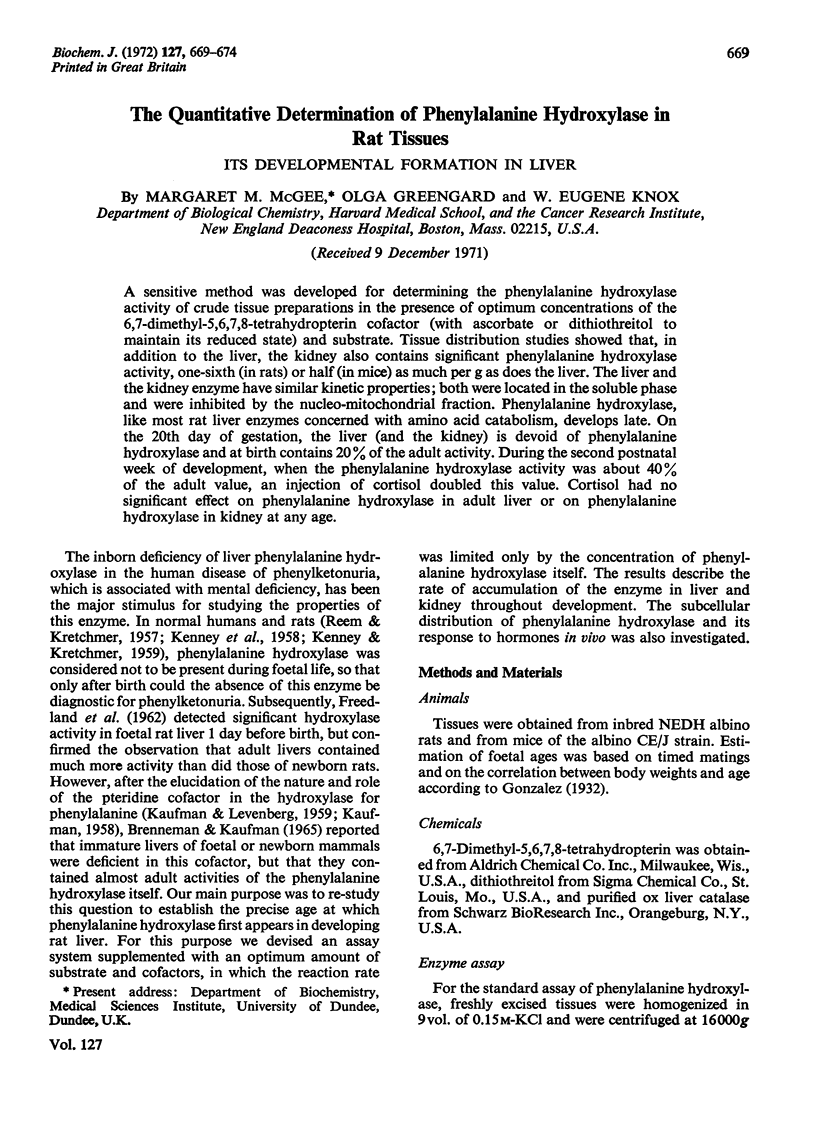
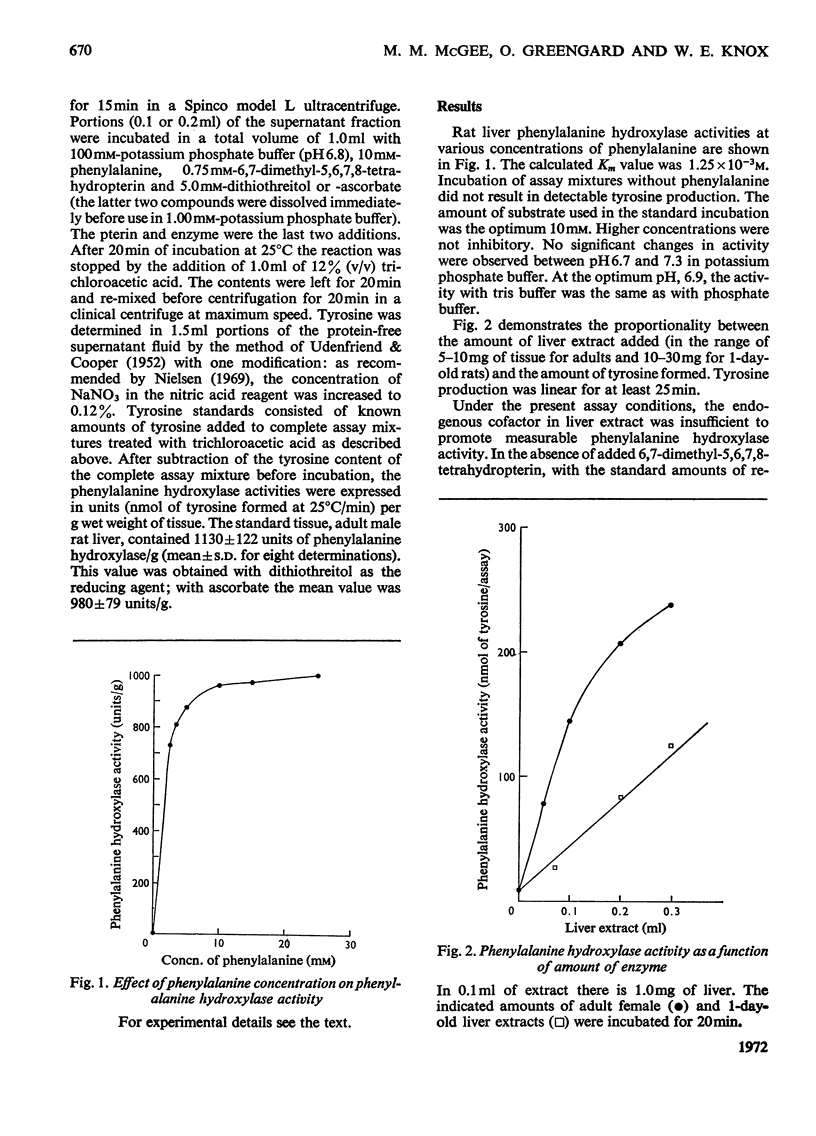
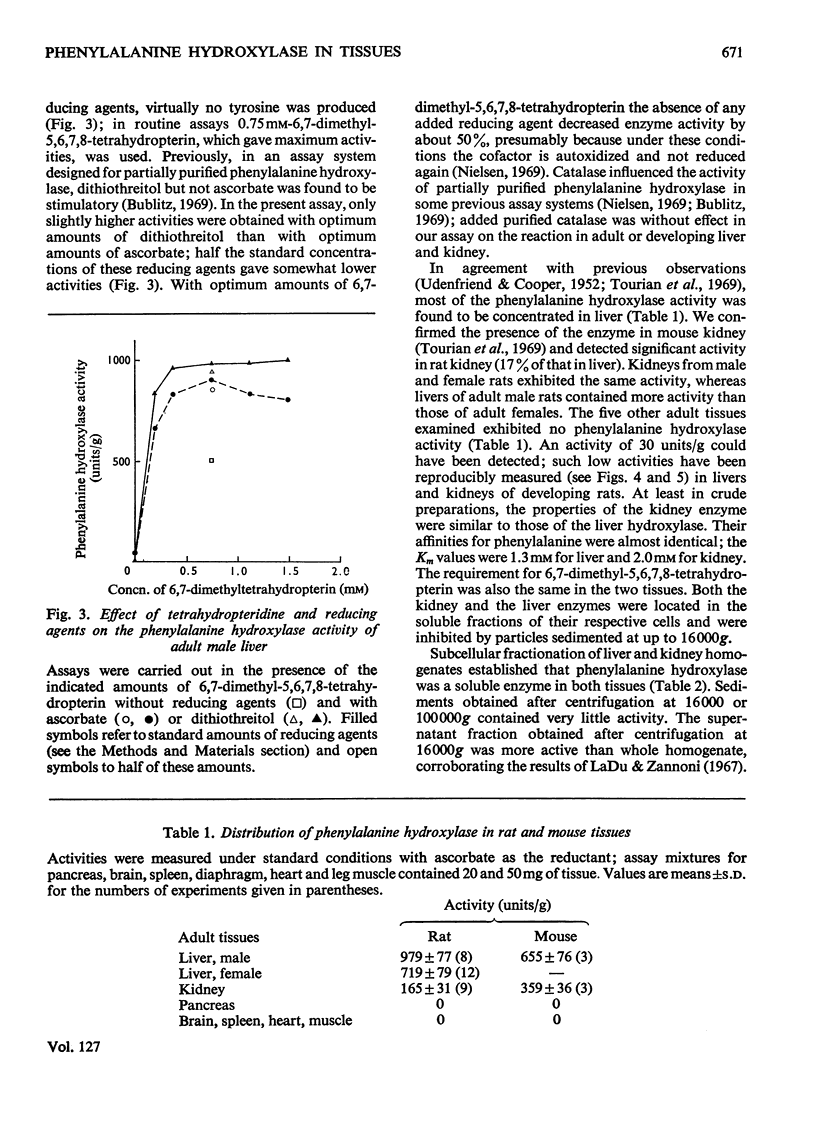
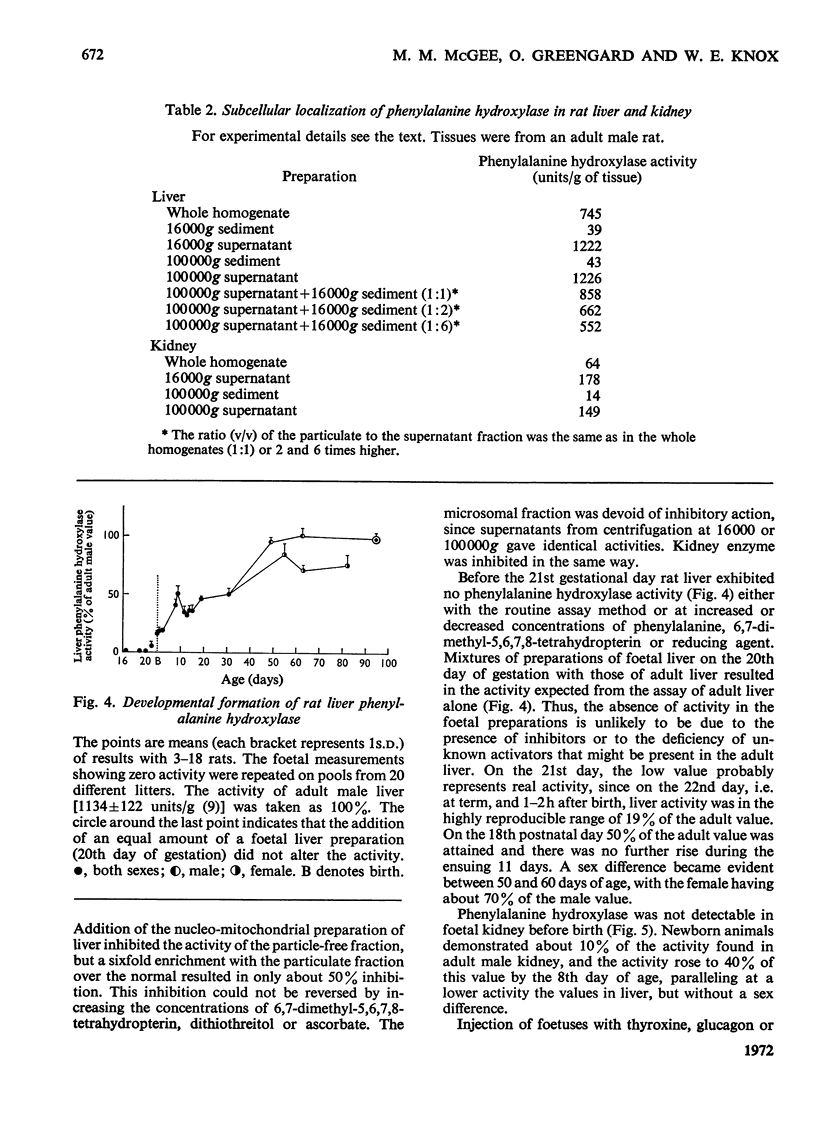
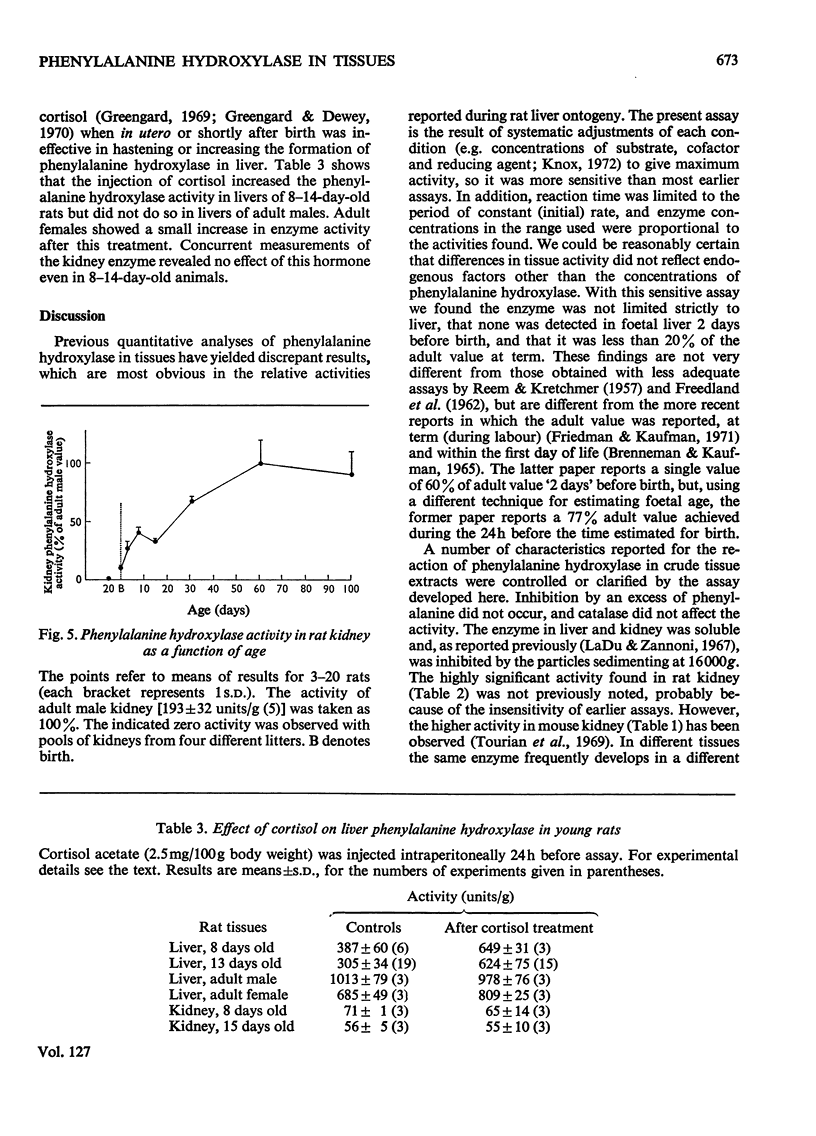
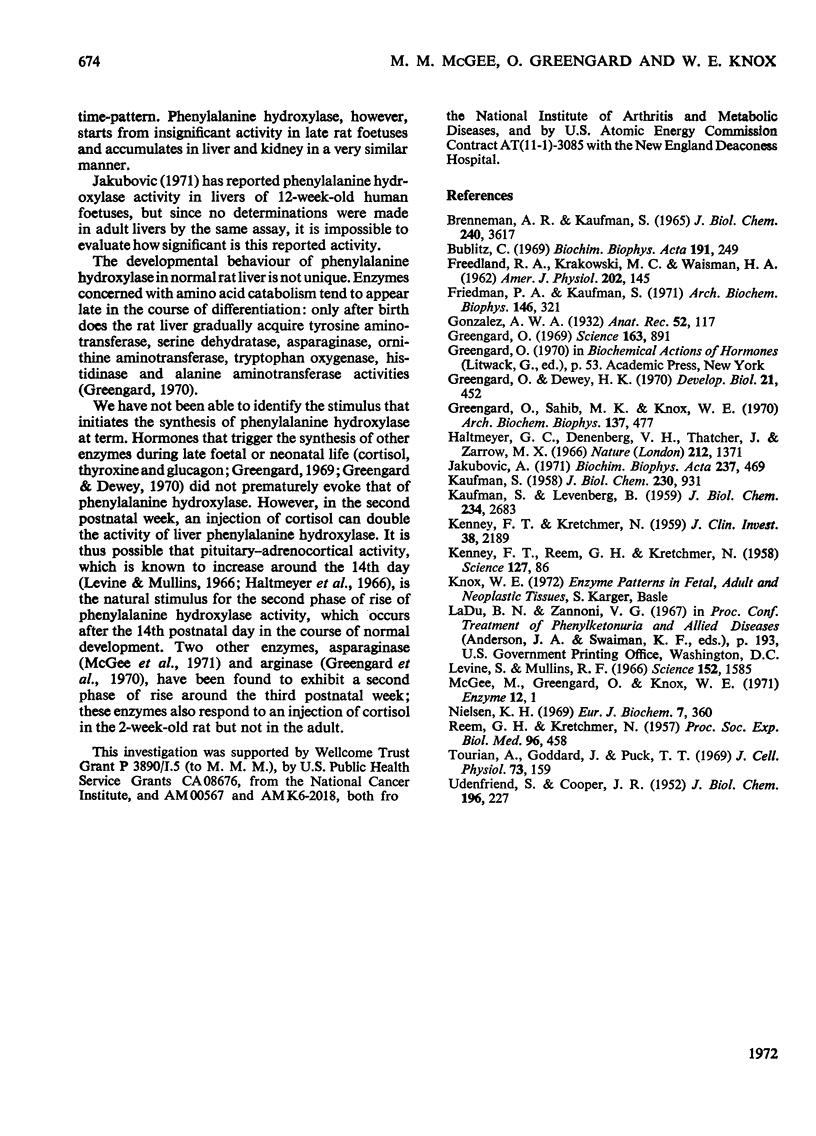
Selected References
These references are in PubMed. This may not be the complete list of references from this article.
- Brenneman A. R., Kaufman S. Characteristics of the hepatic phenylalanine-hydroxylating system in newborn rats. J Biol Chem. 1965 Sep;240(9):3617–3622. [PubMed] [Google Scholar]
- Bublitz C. A direct assay for liver phenylalanine hydroxylase. Biochim Biophys Acta. 1969 Nov 4;191(2):249–256. doi: 10.1016/0005-2744(69)90244-7. [DOI] [PubMed] [Google Scholar]
- FREEDLAND R. A., KRAKOWSKI M. C., WAISMAN H. A. Effect of age, sex, and nutrition on liver phenylalanine hydroxylase activity in rats. Am J Physiol. 1962 Jan;202:145–148. doi: 10.1152/ajplegacy.1962.202.1.145. [DOI] [PubMed] [Google Scholar]
- Friedman P. A., Kaufman S. A study of the development of phenylalanine hydroxylase in fetuses of several mammalian species. Arch Biochem Biophys. 1971 Sep;146(1):321–326. doi: 10.1016/s0003-9861(71)80070-x. [DOI] [PubMed] [Google Scholar]
- Greengard O., Dewey H. K. The premature deposition or lysis of glycogen in livers of fetal rats injected with hydrocortisone or glucagon. Dev Biol. 1970 Mar;21(3):452–461. doi: 10.1016/0012-1606(70)90135-1. [DOI] [PubMed] [Google Scholar]
- Greengard O. Enzymic differentiation in mammalian liver injection of fetal rats with hormones causes the premature formation of liver enzymes. Science. 1969 Feb 28;163(3870):891–895. doi: 10.1126/science.163.3870.891. [DOI] [PubMed] [Google Scholar]
- Greengard O., Sahib M. K., Knox W. E. Developmental formation and distribution of arginase in rat tissues. Arch Biochem Biophys. 1970 Apr;137(2):477–482. doi: 10.1016/0003-9861(70)90465-0. [DOI] [PubMed] [Google Scholar]
- Haltmeyer G. C., Denenberg V. H., Thatcher J., Zarrow M. X. Response of the adrenal cortex of the neonatal rat after subjection to stress. Nature. 1966 Dec 17;212(5068):1371–1373. doi: 10.1038/2121371a0. [DOI] [PubMed] [Google Scholar]
- Jakubovic A. Phenylalanine-hydroxylating system in the human fetus at different developmental ages. Biochim Biophys Acta. 1971 Jun 22;237(3):469–475. doi: 10.1016/0304-4165(71)90265-0. [DOI] [PubMed] [Google Scholar]
- KAUFMAN S. A new cofactor required for the enzymatic conversion of phenylalanine to tyrosine. J Biol Chem. 1958 Feb;230(2):931–939. [PubMed] [Google Scholar]
- KAUFMAN S., LEVENBERG B. Further studies on the phenylalanine-hydroxylation cofactor. J Biol Chem. 1959 Oct;234:2683–2688. [PubMed] [Google Scholar]
- KENNEY F. T., KRETCHMER N. Hepatic metabolism of phenylalanine during development. J Clin Invest. 1959 Dec;38:2189–2196. doi: 10.1172/JCI103998. [DOI] [PMC free article] [PubMed] [Google Scholar]
- KENNEY F. T., REEM G. H., KRETCHMER N. Development of phenylalanine hydroxylase in mammalian liver. Science. 1958 Jan 10;127(3289):86–86. doi: 10.1126/science.127.3289.86. [DOI] [PubMed] [Google Scholar]
- Levine S., Mullins R. F., Jr Hormonal influences on brain organization in infant rats. Science. 1966 Jun 17;152(3729):1585–1592. doi: 10.1126/science.152.3729.1585. [DOI] [PubMed] [Google Scholar]
- McGee M., Greengard O., Knox W. E. The developmental formation of asparaginase in liver and its distribution in rat tissues. Enzyme. 1971;12(1):1–12. doi: 10.1159/000459509. [DOI] [PubMed] [Google Scholar]
- Nielsen K. H. Rat liver phenylalanine hydroxylase. A method for the measurement of activity, with particular reference to the distinctive features of the enzyme and the pteridine cofactor. Eur J Biochem. 1969 Jan;7(3):360–369. doi: 10.1111/j.1432-1033.1969.tb19617.x. [DOI] [PubMed] [Google Scholar]
- REEM G. H., KRETCHMER N. Development of phenylalanine hydroxylase in liver of the rat. Proc Soc Exp Biol Med. 1957 Nov;96(2):458–460. doi: 10.3181/00379727-96-23506. [DOI] [PubMed] [Google Scholar]
- Tourian A., Goddard J., Puck T. T. Phenylalanine hydroxylase activity in mammalian cells. J Cell Physiol. 1969 Apr;73(2):159–170. doi: 10.1002/jcp.1040730210. [DOI] [PubMed] [Google Scholar]
- UDENFRIEND S., COOPER J. R. The chemical estimation of tyrosine and tyramine. J Biol Chem. 1952 May;196(1):227–233. [PubMed] [Google Scholar]


